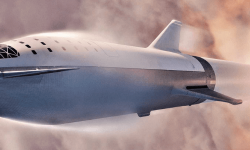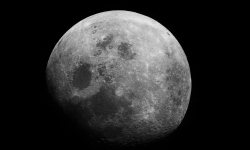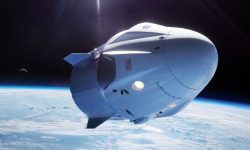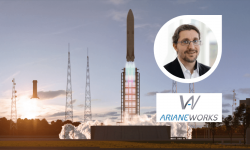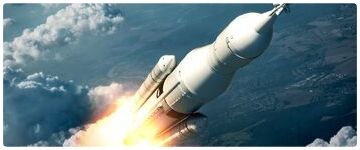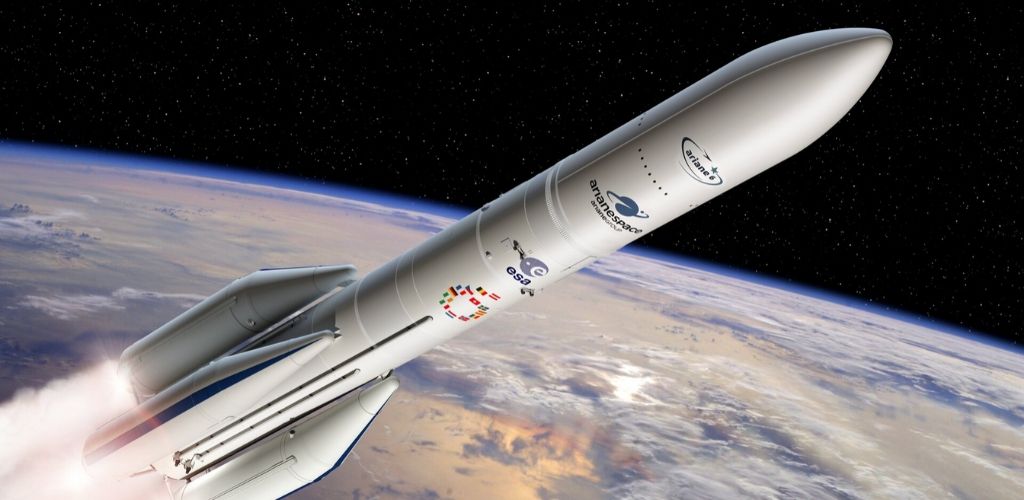
Ariane 6, the new launcher of Arianespace, continues the tests for its first flight scheduled for next year. The Vulcain 2.1 engine, which is to propel the first stage of the launcher, has just finished its qualification tests after two static firing campaigns that have been spread over the last 18 months. In July 2019, these tests culminated with an 11 minute firing. In total, the new version of the Vulcain engine has already accumulated four hours of operation.
The Vulcain 2.1 engine is an improved version of the Vulcain 2 engine that is currently propelling Ariane 5. It has been developed to simplify production. To reduce costs, it uses additive manufacturing and a simplified nozzle. During a typical mission, it must operate for eight minutes to propel the launcher up to 200 km altitude.
The Vinci rocket engine that will propel the second stage is already qualified for a year. It has the particularity of being able to be turned off and re-lit several times, which will certainly be an important asset at a time when the mega-constellations of satellites begin to be deployed. On the technical level, we can say that so far Ariane 6 is performing without fault. There are still some crucial tests that will take place in Guyana. The Vulcain 2.1 engine will thus be integrated on a representative first stage for a final firing. P120C powder boosters will also undergo a final static firing.
On the Ariane 6’s launch pad, work is also progressing at a good pace. The models of two P120 boosters were installed, which gives a good idea of the size of Ariane 6. In August 2019, the gigantic 90-meter-high overhead crane moved over a few tens of meters. For a structure that weighs 1000 tons more than the Eiffel Tower, it is not trivial.
Now that Ariane 6 is almost ready to be launched, it remains to be determined what place it will take in commercial launches market. Ariane 5 has built its success on the launch of telecommunications satellites in geostationary orbit, a market currently at half mast although 2019 seems to mark a slightly better trend. Satellites targeting this orbit are also diversifying, ranging from 300 kg to 6.5 tonnes.
Between the mega-constellations of satellites, smallsats, flexible satellites and the few institutional missions that will command the ESA and the European countries, Ariane 6 will certainly have to carry out more diverse missions than Ariane 5. In this evolving market, Arianespace, however, continues to perform well. Since January the 1st, the company has signed two launches for Ariane 5, two launches for Ariane 6, two launches for Soyuz and three launches for the Vega launcher. This will enable Arianespace to get off to a good start in the early 2020s.

ESA Member States will support Arianegroup if Ariane 6 order book is not completed
– News of April 23, 2019 –
Recently, Arianegroup was looking for institutional missions to start the production of the first Ariane 6 launchers. Half of these rockets should be used to launch government missions between 2020 and 2025. But the European states did not seem to have planned a such activity. While we are just over a year from the inaugural flight of Ariane 6, only three institutional missions are scheduled.
It is important for Ariane 6 to have long-term visibility on upcoming launches. The manufacturing process of an Ariane 6 could take up to two years. This is not a variable that can easily be adjusted. Arianegroup had therefore delayed as much as possible the launch of the production while waiting to have more visibility.
It appears that ESA member states reached an agreement on 17 April. This agreement does not really guarantee four new missions to the European launcher. It states however that if these missions are not found, Arianegroup will be compensated. Ariane 6 goes a step further to meet its schedule, a rare feat in the space sector.
In parallel of Ariane 6 operation, Arianegroup will develop a reusable launcher
– News of February 17, 2019 –
For now, no Ariane 6 component will be recoverable. The drop in prices will only be the consequence of the new manufacturing processes. However, we know that the CNES and Arianegroup research departments are working on two projects that can lead to the creation of a reusable launcher. The first project is a methane engine named Prometheus. The second project is Callisto, a miniature reusable rocket prototype.
Callisto could climb up to 35 km and land vertically. Callisto and Prometheus will be used to develop a new prototype named Themis. It will be a kind of reusable first stage. The developments should be used to develop the Ariane Next launcher that will become the successor of Ariane 6. But we do not expect Ariane Next before the end of the 2020s, and perhaps even in the early 2030s. The European launcher industry will have to survive for a decade, entirely relying on Ariane 6.
If the American launchers continue to drop prices, Ariane 6 will have more and more difficulties to convince commercial customers. Ariane 6 would then become a launcher reserved for institutional missions, kept alive by the infusions of public money. We can also imagine Arianegroup greatly accelerating the development of Ariane Next. We can also think that Ariane 6 will evolve in the mid-2020s. Ariane 6 could have a reusable first stage to fight against SpaceX’s Falcon 9 and Blue Origin’s New Glenn. The first trials of Prometheus and Callisto are scheduled to take place in 2020.
The French Court of Auditors highlights the main threats to Ariane 6
– News of February 10, 2019 –
The latest annual report of the French Court of Auditors is quite critical about Ariane 6 and the European launcher industry in general. The New Space is changing the market. On the supply side, there are still more private launchers and prices are falling. On the demand side, space applications will explode in the coming years. In this context, maintaining access to independent and inexpensive space is paramount.
For decades, Europe has been producing high-performance but quite expensive launchers. Ariane 6 was created to reduce costs. But the technical choices and Arianegroup’s industrial model could penalize the competitiveness of Ariane 6. The Ariane rockets were designed with the idea of a geographical return for the different countries contributing to the program. While this organization ensures a good return on investment for each participating country, it is not an optimal business model. This complicates the industry.
Until ten years ago, this was not a problem because the competition was very limited. But Ariane 6 will have to deal with SpaceX and Blue Origin that do not have this kind of constraints. On a technical level, the French Court of Auditors warns Arianegroup on the innovations brought by SpaceX and in particular on the reuse. Ariane 6 must evolve, and quickly.
Ariane 6 will use new technologies, such as the Prometheus rocket engine. This prototype will pave the way for the design of a very low-cost, potentially reusable methane engine. The design of Prometheus has just passed a critical review. The first models could be fired on a test bench in 2020, the same year as the first launches of Ariane 6.
Ariane 6 and Vega booster tests continue successfully
– News of February 3, 2019 –
The Ariane 6 booster, the P120, will also be used as the first stage on the new version of the Vega C light launcher. On January 25, the P120 achieved a new static firing. It ran for 135 seconds and provided a maximum thrust of 420 tonnes. All the indicators are therefore positive.
Unlike SpaceX, Arianegroup has not abandoned carbon fiber for the design of its rockets. This material is widely used in the design of the new booster, which should give a performance gain over its predecessor, the P80. The boosters of Ariane 5 are made of steel and they weigh quite heavy. 86% of their mass is fuel. Thanks to the carbon fibers of the P120, this will increase to 93%. The European Ariane 6 booster will be manufactured in Italy as most of Vega C. The production should be quite substantial with 30 to 40 units per year. The booster will be used on two launchers, which should allow savings in production.
The P120 is a powder booster barely different from the rockets used in China 800 years ago. It is a tube filled with combustible powder, with a central trench that is a combustion chamber. The operating principle is old but with modern materials and modern propellant, performances are breathtaking. On Ariane 6, the four P120 boosters will provide more than 90% of the thrust during the first phases of flight, which is much more than the propulsion in liquid propulsion.
Ariane 6 needs additional missions
– News of January 22, 2019 –
Ariane 6 is at the center of Arianegroup’s current concerns. The European company is 18 months from the first Ariane 6 launch. Arianespace is still looking for at least four additional missions before launching the production of the first 14 launchers. The company therefore appealed to its European institutional clients which had committed in 2014 to use Ariane 6.
For the moment, only three missions have been reserved by European space agencies and European governments. Two launches are reserved for the Galileo satellite navigation constellation and a launch is set to launch a French spy satellite.
To get enough orders and to start production, solutions are studied. The JUICE mission could, for example, switch from Ariane 5 to Ariane 6. However, ESA and European governments must quickly assert their support for the new launcher of Arianegroup. A production delay could embarrass commercial customers waiting for Ariane 6 in 2020.
In the meantime, Arianespace has also to focus on bringing Vega C into service within a few months. This will be an opportunity to test the P120 engine which will be an essential component of Ariane 6. In addition to this launch, Arianespace has 12 commercial launches planned for 2019 : 5 launches for Ariane 5, 4 launches for Vega and 3 launches for Soyuz. For its OneWeb customer, Arianespace should also launch one of its Soyuz in Baikonur.
The development of Ariane 6 continues serenely
– News of October 23, 2018 –
Ariane 6 is set to fly for the first time in 2020. The development of the European launcher seems to be proceeding according to plan, with no delays or unforeseen events. The development of Ariane 6 is almost an exception in comparison with NASA and the Chinese space agency. On October 18th, we learned that the Ariane 6 upper stage engine test, called Vinci, has been completed. It was abused in all directions during 148 static starts, for a total of 14 hours.
The particularity of the upper stage of Ariane 6 is that it can be relighted. During one of these tests, it was thus switched off and on again 20 times in a row, which is a very useful capacity to put into orbit satellite constellations. During another test, the engine ran for 1569 seconds. These tests pushed Vinci far beyond its specifications. During operational missions, it should not be relighted more than 4 times and should not exceed 900 seconds of operation. Vinci burns oxygen and liquid hydrogen, which guarantees a very large specific impulse, of about 460 seconds.
If ArianeGroup can congratulate itself on a development in time, it is because the work on the Vinci engine started a long time before the development of Ariane 6. The first studies go back to the end of the 90s. Vinci was originally to be integrated on an improved version of Ariane 5 but, it is finally on Ariane 6 that it will work for the first time. Now that the tests are complete, the construction of the first model intended to fly will start in early 2019. It will then be integrated on the second stage which will make the first flight of the new European launcher. Across Europe, the industrial sector that will allow Ariane 6 to fly is therefore increasingly operationnal.
The many rocket subcontractors will have an important responsibility to try to reduce the Ariane 6 cost by 40% to 50% compared to Ariane 5. New industrial processes and streamlining of production must contribute to lowering the cost. But to mass produce and save money, you need orders. Ariane is still waiting for ESA to make a bulk order, which would allow the launch of the first batch of 10 to 15 launchers.
Ariane 6 already signs its first customers
– News of September 25, 2018 –
Ariane 6 is expected to make its first flight in 2020. We learned on September 10 that Ariane 6 already has its first commercial customers. Eutelsat will launch five satellites with Arianespace. CNES has also announced the purchase of a launch of Ariane 6 in its two-booster version. The launcher will be used to put into orbit a French military satellite. It is an optical reconnaissance satellite intended to replace current systems.
Ariane 6 seems to appeal to both institutional and commercial clients. But at the beginning of the next decade, Blue Origin’s New Glenn could be a formidable competitor. SpaceX continues to pull prices down, and China’s space sector is growing rapidly. Arianespace will have to fight for each contract.
Ariane 6 and Vega powder booster tests begin
– News of June 5, 2018 –
The development of the Ariane 6 rocket continues on schedule. This month, it is the P120 powder boosters of the future European launcher that should be the subject of static tests. Ariane 6 will be a modular launcher, and it is precisely on the side of these boosters that the new European launcher will be able to adapt to its missions. The rocket will be available in two versions : Ariane 62 with two boosters, and Ariane 64 with four boosters. In addition to that, the first floor of the light launcher Vega must make its first flight next year. The P120 booster is therefore crucial for the future of ArianeGroup and the space activities of the Europe. Once in operation, this new powder booster will become the largest monolithic solid propellant engine in the world.
Powder boosters are typically split into segments : three segments for Ariane 5 boosters, four segments for Space Shuttle boosters, and five segments for the SLS boosters. This facilitates manufacturing but represents a structural weakness that increases the risk of incidents. The propellants of the P120 will be put at the same time to eliminate this concern. With almost 12 meters high, the booster P120 will accommodate 144 tons of propellant, which will lift Ariane 6 and Vega during the early phases of their flight. The test that will be conducted during the month should ensure the proper operation and performance of the booster. Despite their raw appearance, these powder boosters are machines of great precision. The tests will therefore be used to ensure that the thrust sought for the different phases of the flight is delivered.
P120 boosters will also be tested under extreme conditions in terms of thermal and mechanical resistance to ensure the quality of their manufacture. This new common element of Ariane 6 and Vega will test the industrial capabilities of the European joint venture. Mass production is one of the elements that should help bring down costs. To achieve this, ArianeGroup has implemented innovative production processes. The manufacture of nozzles, for example, has been completely revised. The handling and quality control techniques of the booster components are directly from the automotive industry.
The first Ariane 6 is about to be produced
– News of January 2, 2018 –
The European Space Agency (ESA), CNES, Airbus and Safran have agreed to produce the first Ariane 6. The new version of the European launcher is expected to make its debut in 2020 but the group members have judged that the industrial processes are now ripe enough to switch to production. Ariane 6 will be available in two versions : Ariane 62 and Ariane 64, respectively equipped with 2 and 4 boosters powder, which has a significant impact on the performance of the rocket. The first version to be produced is Ariane 62, the version equipped with two powder boosters.
For Ariane Group, Ariane 6 is a major turning point. Although the technologies are very similar to Ariane 5 and Vega, Ariane 6 is a revolution in the group’s industrial model. This model is inspired by the codes of civil aviation and the automobile, with a greater integration of the suppliers and an increasing standardization of the parts, but also tools of production. Produced in two versions, Ariane 6 will be a modular and adaptable launcher. The price offensive launched by SpaceX continues to upset the commercial pitcher industry.
Ariane 6 will be equipped with the Prometheus engine. This engine has just received significant funding last month. Prometheus is a clue about the plans of Europe for the period following the exploitation of Ariane 6. It is the competition on the prices which influences the specifications of Prometheus : the engine must cost ten times lower than the Vulcain engine that currently equips Ariane rockets. Each model must also be reusable five times. Prometheus also has to help the European rockets to move to a couple of propellants methane and liquid oxygen. SpaceX’s BFR, Blue Origin’s New Glenn and ULA’s Vulcan will all burn that couple of propellants.
Ariane Group hopes that an Ariane 6 will be launched in 2020, 5 in 2021, 8 in 2022 and a dozen in 2023. This is a more sustained pace of launches than the current Ariane 5 launches. It is explained by less frequent use of dual launch.
The first flight of Ariane 6 will take place in 2020
– News of June 27, 2017 –
Stéphane Israël, CEO of Arianespace, said the first flight of Ariane 6 will take place in July 2020. Ariane 6 will be a modular launcher that will exist in two versions, equipped respectively with 2 and 4 boosters, which should allow launches with a single or dual payloads in geostationary orbit.
Under the pressure of its many new competitors, Arianespace hopes to reduce its costs by 40% to 50% with Ariane 6. Arianespace also wants to double the pace to reach a rate of 12 launches per year. To achieve this, the entire industrial sector of subcontractors must be reviewed. Arianespace needs to adopt new practices that are shaking up the industry, such as 3D printing.
Ariane 6, a necessary answer from Ariane Group to face the competition
Europe has taken an important place in the market for access to space. Ariane 4 and Ariane 5 in particular have given a dominant place to the Old Continent. But this same market is changing with the emergence of new private actors. It has become much more competitive than it was ten years ago. This new competition mainly maintained by SpaceX promises a fierce war on prices. In this context, Ariane Group, a joint venture of Airbus and Safran, is in charge of developing a new launcher : Ariane 6. This launcher will eventually replace Ariane 5, the current star of Arianespace.
Ariane 5 has for a long time reigned supreme in the market of commercial satellite launches. His ability to launch two heavy satellites to the geostationary orbit in a single shot was one of the keys to his success. Declined in multiple versions since its commissioning in 1996, it should celebrate its 100th shot this year. It had only four failures, most of them at the beginning of the program. Ariane 5 works, inspires confidence and makes Europeans proud.
But Ariane 5 is also very expensive because its industrial model is based on the principle of geographical return : each country participating in the program receives an industrial burden equivalent to its share of funding. On the political level, it allows everyone to agree. But in terms of economic efficiency, it’s a difficult model to defend against companies that do not have these kinds of constraints. Thus, the development of Ariane 5 would have cost 7 billion euros. In front of that, SpaceX declares to have developed its Falcon 9 for 300 million dollars and its Falcon Heavy for 500 million dolls.
The dual launch to the geostationary orbit is the heart of the activity of Ariane 5. It is both an advantage and a disadvantage : the rocket can justify its cost only if it launches two satellites with each shot. But telecommunications satellites are becoming heavier and it becomes difficult to cohabit two of them while the rocket can propel only 10 tons to the geostationary transfer orbit. Another weakness of Ariane 5 : its upper floor can not be turned off and on again. A feature that exists yet on many other launchers and is necessary for some customers. All this makes the supremacy of Ariane 5 is threatened.
Last year, with 18 successful shots, SpaceX made it to the top of the podium after only fifteen years of existence. An incredible pressure weighs on Ariane 6 : it is this launcher that will have to allow Europe to perform well during the 2020s, perhaps even a little longer if we refer to Ariane 4 and Ariane 5 development cycles.
Ariane 6 must cut costs by half compared to Ariane 5
The CNES and Ariane Group engineers have created an architecture to solve the weaknesses of the previous launcher. The most important is of course the cost of Ariane 6 : the target is a 40% to 50% decrease compared to the cost of Ariane 5. To achieve this, Ariane Group proceeds differently than its American competitor : no reuse, at least for the moment. Instead, Ariane Group hopes to reduce its prices by changing its industrial model. Inspired by aviation and automobile standards, the European champion wants to redefine his relations with his subcontractors : more integration and fewer duplicates in controls.
Another factor of economy : Ariane 6 will move to horizontal integration. The launcher will be assembled lengthened, which will avoid building high-rise assembly buildings. It is also the guarantee of easy access to all parts of the launcher for engineers : instead of taking elevators, they can move from head to engine by walking simply. The engine is precisely the most expensive element of a launcher, and on this side also Ariane Group wants to achieve savings. 3D printing should greatly accelerate their manufacture. Parts of the Vulcain engine that previously needed to solder 200 different parts thoroughly can now come out of a printer with just a click.
The manufacture of Ariane 6 is therefore thought to be faster and cheaper. But the rocket also wants to solve the other weaknesses of Ariane 5. It is necessary for example to be able to solve the equation of the double launch. To achieve this, Ariane Group relies on modularity. Ariane 6 will be available in two versions, Ariane 62 and Ariane 64. This leaves the choice to launch one or two massive satellites to the geostationary orbit. If two satellites are compatible, then Ariane 64 will take care of it. If not, it remains possible to launch the satellites one by one with Ariane 62. This is reminiscent of the Ariane 4 era.
The launch of constellations of satellites facilitated by Ariane 6
In terms of design, we immediately notice that Ariane 6 is larger than Ariane 5, with a size of 70 meters instead of 56 meters. For booster propellants, it is the opposite : their size is almost twice as small. Individually less powerful, they can be more numerous. The Ariane 62 version has two powder boosters but Ariane 64 will receive four. On the other hand, the central body will take almost entirely the motorization of Ariane 5.
On the first floor is located a new version of the Vulcain engine, called Vulcain 2.1. There will be some changes, including a new spoon and a new ignition system from the ground. Overall, the performances are the same : Vulcain 2.1 could be successfully tested at the end of 2018.
On the second floor, the Vinci engine keeps its role but with one important difference: it can now be reusable many times. During a test, he managed to chain 20 consecutive ignition without problem. This ability may prove particularly useful for firing satellites in clusters, and thus the setting into orbit of constellations.
In a rapidly changing space market, Ariane Group is leading other ambitious projects
Ariane 6 is a beautiful evolution for the European launcher. But will that be enough ? A report from the Institut Montaigne published at the end of 2017 is very cautious about the future of Ariane 6. The report shows that a launch on Ariane 6 would cost a satellite operator several tens of millions of euros more than a launch on a Falcon 9, as soon as the new European launcher is put into service in 2020. Arianespace reassures : the construction of the first Ariane 6 launcher has just started and the company’s order book is still full and the historical customers show their support.
The 2020 decade promises to be rich in terms of European institutional launches. Emmanuel Macron said that it was necessary to harmonize the rules of competition between SpaceX and Ariane Group, in other words the European institutional missions should be reserved for European rockets in the same way that the institutional launches American must be made on American launchers . Finally, the ultimate asset of Ariane Group is its reputation for reliability that the company has taken decades to build.
Between the concerns of some and the trust of others, it is difficult to predict what awaits Ariane for the next ten years. The market for access to space is changing, not just because of SpaceX. Blue Origin and Chinese launchers are also a big question mark. Thus, even if Ariane 6 manages to resist in 2020, the situation could be completely different in 2025 or 2030. Ariane Group can no longer miss 25 years between its generations of launchers, especially at a time when every year or almost brings his lot of innovations and new actors. It is also unclear what ambition the Europeans are setting : does Ariane only need to ensure independent access to space, or does it have the ambition to remain a world leader ?
On the side of CNES and ESA, thinking about the post Ariane 6 is already well underway. Reuse seems to be studied : a demonstrator called Callisto will also make his first flight with a budget of 100 million euros. This demonstrator is the result of collaboration between French, German and Japanese. Callisto must allow to acquire the bases of the reuse in the manner of SpaceX. He should be able to climb to an altitude of 35 kilometers and then return to land near his take-off. At the same time, Europe is also developing a hot engine for methane and liquid oxygen called Prometheus, a technology that is supposed to facilitate the massive reuse of rockets and to drastically reduce costs. Prometheus will also be launched for the first time in 2020.
In the longer term, the lessons of Prometheus and Callisto will be combined to develop a new demonstrator whose code name is Tennis. Tennis will be ten times more massive than Callisto. It will be equipped with the Prometheus engine and is expected to be launched in 2025. At this time, it should be fixed on the final benefits of reuse and methane engines. Europe should then have the technological mastery to quickly develop a launcher integrating all these innovations.
Image by SkywalkerPL [CC BY 3.0 (https://creativecommons.org/licenses/by/3.0)], from Wikimedia Commons
